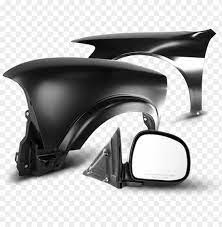The winter season usually means having to pack away your car
as the roads will be practically impassable. As the winter comes
to an end and the snow starts to melt away, you’ll be itching to drive your
car. Assuming you exercised all caution for winter car storage, your car will
be safe to be put back on the road. However, even with proper storage, you
still need to exercise caution when bringing your car back on the road after a
long hibernation. This will protect your engine from damage and keep it running
smoothly. The following is a checklist of things to do when removing your car
from storage.
as the roads will be practically impassable. As the winter comes
to an end and the snow starts to melt away, you’ll be itching to drive your
car. Assuming you exercised all caution for winter car storage, your car will
be safe to be put back on the road. However, even with proper storage, you
still need to exercise caution when bringing your car back on the road after a
long hibernation. This will protect your engine from damage and keep it running
smoothly. The following is a checklist of things to do when removing your car
from storage.
One, you should be ready for diagnosis using handy tools
such as the GM diagnostic tool. Every part of your car will need to be fully
inspected and certified as roadworthy and the best way to do so is through the
use of reliable diagnostic tools. Two, start your inspection by checking the
battery. If you kept the battery on a maintainer during storage, it should be
fully charged and in good condition. If you notice that it’s low on charge,
plug it to charge. Note however that if the battery has completely drained, its
lifespan might be compromised. You should not under any circumstance, attempt
to start the vehicle on a battery that’s not fully charged. Other parts to
check are the battery terminals and cables. If you notice any signs of
corrosion, clean them before you proceed. Two, ensure that your car has enough
engine oil and if not, add some fresh oil as required. If you have the time,
you should first drain the oil in the tank or drain it at the earliest
opportunity. Do not allow your car to run for too long with old oil; this is
one sure way to diminish your car’s engine health.
such as the GM diagnostic tool. Every part of your car will need to be fully
inspected and certified as roadworthy and the best way to do so is through the
use of reliable diagnostic tools. Two, start your inspection by checking the
battery. If you kept the battery on a maintainer during storage, it should be
fully charged and in good condition. If you notice that it’s low on charge,
plug it to charge. Note however that if the battery has completely drained, its
lifespan might be compromised. You should not under any circumstance, attempt
to start the vehicle on a battery that’s not fully charged. Other parts to
check are the battery terminals and cables. If you notice any signs of
corrosion, clean them before you proceed. Two, ensure that your car has enough
engine oil and if not, add some fresh oil as required. If you have the time,
you should first drain the oil in the tank or drain it at the earliest
opportunity. Do not allow your car to run for too long with old oil; this is
one sure way to diminish your car’s engine health.
Three, check the coolant, brake fluid, power steering fluid
and fuel. If you didn’t put fuel stabilizer into the fuel tank before you
stored the car, it might run rough the moment you turn on the engine. If you
forgot this important step, adding octane booster will promote smooth running.
Four, do a quick visual check of the engine, underneath the car and the car
interior. Look for fluid leaks, torn wires, cracks and signs of deterioration.
Also check for signs of mice; if you notice droppings or the smell of urine,
you should assume that the electrical wires of the car have been chewed by
mice. You can use a BMW diagnostic tool to
check that all electrical parts are running smoothly and to also ensure the
brakes, clutch and gear and in proper functioning condition. Lastly, check that
you have correct tire pressure, then fire up the engine and leave it to warm up
a little before you start driving.
and fuel. If you didn’t put fuel stabilizer into the fuel tank before you
stored the car, it might run rough the moment you turn on the engine. If you
forgot this important step, adding octane booster will promote smooth running.
Four, do a quick visual check of the engine, underneath the car and the car
interior. Look for fluid leaks, torn wires, cracks and signs of deterioration.
Also check for signs of mice; if you notice droppings or the smell of urine,
you should assume that the electrical wires of the car have been chewed by
mice. You can use a BMW diagnostic tool to
check that all electrical parts are running smoothly and to also ensure the
brakes, clutch and gear and in proper functioning condition. Lastly, check that
you have correct tire pressure, then fire up the engine and leave it to warm up
a little before you start driving.


